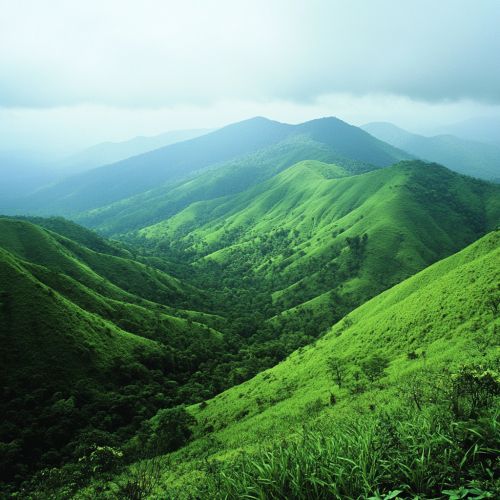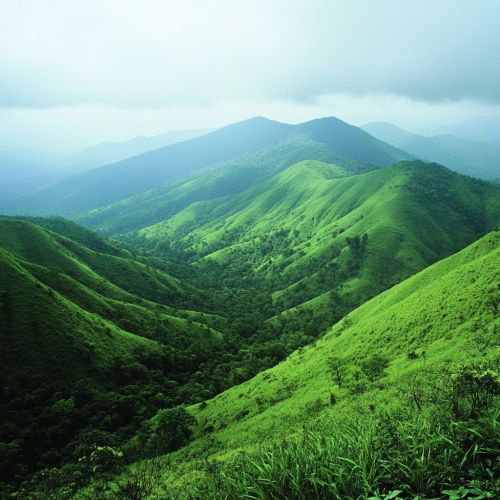Western Ghats
Geography and Location
The Western Ghats, also known as the Sahyadri Hills, is a mountain range that runs parallel to the western coast of the Indian peninsula. It spans approximately 1,600 kilometers from the northern state of Gujarat to the southern tip of Tamil Nadu. The range traverses through the states of Maharashtra, Goa, Karnataka, and Kerala. The Western Ghats is a UNESCO World Heritage Site and is recognized as one of the world's eight "hottest hotspots" of biological diversity.


Geology
The Western Ghats are geologically older than the Himalayas. They are composed of basaltic lava flows, which are part of the Deccan Traps, a large igneous province formed during the late Cretaceous period. The range is characterized by its rugged terrain, steep slopes, and deep valleys. The highest peak in the Western Ghats is Anamudi, which stands at 2,695 meters above sea level.
Climate
The Western Ghats significantly influence the Indian monsoon weather patterns. The range acts as a barrier to the moist winds from the Arabian Sea, causing heavy rainfall on the western side and creating a rain shadow effect on the eastern side. The climate varies from tropical rainforest in the lowlands to montane forests in the higher elevations. The region experiences a tropical monsoon climate with heavy rainfall during the monsoon season and a dry season from December to March.
Biodiversity
The Western Ghats is one of the most biodiverse regions in the world. It is home to a wide variety of flora and fauna, many of which are endemic to the region. The range supports several distinct ecoregions, including tropical and subtropical moist broadleaf forests, montane grasslands, and shrublands.
Flora
The Western Ghats is home to over 7,000 species of flowering plants, 1,800 of which are endemic. The region's forests are classified into several types, including tropical evergreen forests, semi-evergreen forests, moist deciduous forests, and montane shola-grassland complexes. Notable plant species include the Neelakurinji, which blooms once every twelve years, and the Malabar Tamarind.
Fauna
The Western Ghats supports a rich diversity of animal life, including several endangered and endemic species. Notable mammals include the Lion-tailed Macaque, Nilgiri Tahr, Indian Elephant, and Bengal Tiger. The region is also a critical habitat for several species of amphibians, reptiles, and birds, such as the Malabar Grey Hornbill and the Nilgiri Wood Pigeon.
Hydrology
The Western Ghats are the source of numerous rivers that are crucial for the water supply in peninsular India. Major rivers originating from the Western Ghats include the Godavari, Krishna, Kaveri, and Tungabhadra. These rivers play a vital role in agriculture, drinking water supply, and hydroelectric power generation.
Conservation
The Western Ghats face several conservation challenges, including deforestation, habitat fragmentation, and human-wildlife conflict. Various protected areas, such as national parks, wildlife sanctuaries, and biosphere reserves, have been established to conserve the region's biodiversity. Notable protected areas include the Silent Valley National Park, Periyar Tiger Reserve, and Bandipur National Park.
Cultural Significance
The Western Ghats have a rich cultural heritage and are home to several indigenous communities. The region is also known for its ancient temples, forts, and historical sites. The Ghats have been mentioned in various ancient Indian texts and have been a source of inspiration for poets, writers, and artists.
